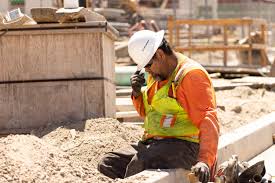Introduction to the Heat Wave Crisis
Southern California is currently experiencing an extreme heat wave, which has sent temperatures soaring to alarmingly high levels, reaching 113 degrees Fahrenheit in some locations. This drastic rise in temperature has prompted the National Weather Service to issue heat advisories and warnings across the region. The combination of these oppressive temperatures, coupled with brisk winds and dry conditions, has not only elevated the risk of heat-related illnesses among residents but also heightened the potential for wildfires—an ever-present threat in this fire-prone area. This situation calls for heightened awareness, preparation, and community support as the region navigates through the intense heat.
The Impacts of Heat on Public Health
Heat waves pose significant health risks, particularly for vulnerable populations such as the elderly, young children, and individuals with chronic health conditions. Increased exposure to extreme temperatures can lead to heat exhaustion, heat stroke, and other heat-related illnesses. With the ongoing heat wave, local health authorities are strongly advising residents to take necessary precautions. Hydration emerges as a primary concern, as individuals need to increase their fluid intake while avoiding strenuous outdoor activities during the hottest parts of the day. As community members take stock of their circumstances, they are reminded to look out for friends and neighbors, especially those who might be more susceptible to heat stress.
Wildfire Risks Amplified
Forecasters have drawn attention to concerning historical parallels when reviewing the current weather patterns in Southern California. Previous incidents during similar climatic conditions have resulted in devastating wildfires in the greater Los Angeles area. Consequently, local authorities are on high alert, aware of the exacerbated risk of wildfires igniting and spreading rapidly amid the dry conditions and high winds. It is crucial for residents to remain vigilant and informed about fire safety protocols should the situation escalate.
Community Resources and Response Efforts
In light of the severe heat wave, Los Angeles County has opened numerous cooling centers to serve as respite for those lacking air conditioning in their homes. These centers are designed to provide a safe and comfortable environment, aiding individuals in escaping the sweltering heat. Additionally, emergency services have ramped up their preparedness by anticipating an increase in incidents related to heat stress. The local government is encouraging residents to actively check in on their friends, family, and neighbors who may be particularly vulnerable during such extreme weather.
Long-Term Outlook: Duration and Precautions
Meteorologists predict that the heat wave will continue throughout the week, with temperatures likely peaking midweek before gradually declining towards the end of the week. During this period, residents are urged to stay informed regarding weather updates from reputable sources. Following the guidance provided by local health and safety officials is paramount to mitigating the risks associated with extreme heat. Utilizing protective measures such as wearing lightweight clothing, seeking shade, and planning activities during cooler hours can further aid in keeping individuals safe during this oppressive weather spell.
Conclusion: Preparedness is Key
As Southern California endures this extreme heat wave, preparedness emerges as a vital theme. Whether it’s through staying hydrated, reducing outdoor exertion, or utilizing community resources such as cooling centers, residents can take meaningful steps to protect themselves and their loved ones from the heat-related hazards. The combined efforts from local authorities, community organizations, and individuals will play a critical role in ensuring public safety during these sweltering days.
FAQs
What are the signs of heat-related illnesses?
Heat-related illnesses can manifest as symptoms such as heavy sweating, weakness, dizziness, nausea, headache, or confusion. It is important to recognize these signs early and seek medical attention if they arise.
How can I stay cool without air conditioning?
To stay cool without air conditioning, consider visiting public cooling centers, taking cool showers, using fans, staying hydrated, and wearing lightweight, breathable clothing.
What should I do in case of wildfires?
In case of a wildfire, stay indoors, keep windows and doors closed, and listen to local authorities for evacuation orders. Prepare an emergency bag in advance, and ensure that you have a plan for communication and meeting locations with family members.
How can I help neighbors or friends who are elderly or vulnerable?
Offer to check in on them regularly, assist them in obtaining necessary supplies, or escort them to a cooling center if needed. The support of the community can greatly alleviate the effects of heat stress on vulnerable populations.
When can we expect a break from the heat?
Weather forecasts suggest that while temperatures will peak midweek, there should be a gradual cooling trend towards the end of the week. Staying updated on local weather reports is essential for accurate timing of cooling relief.

